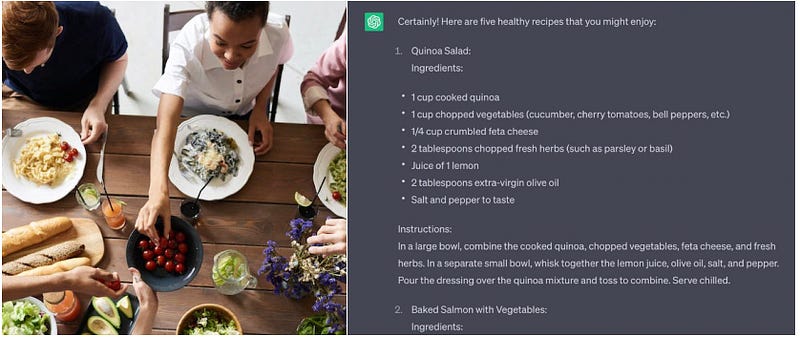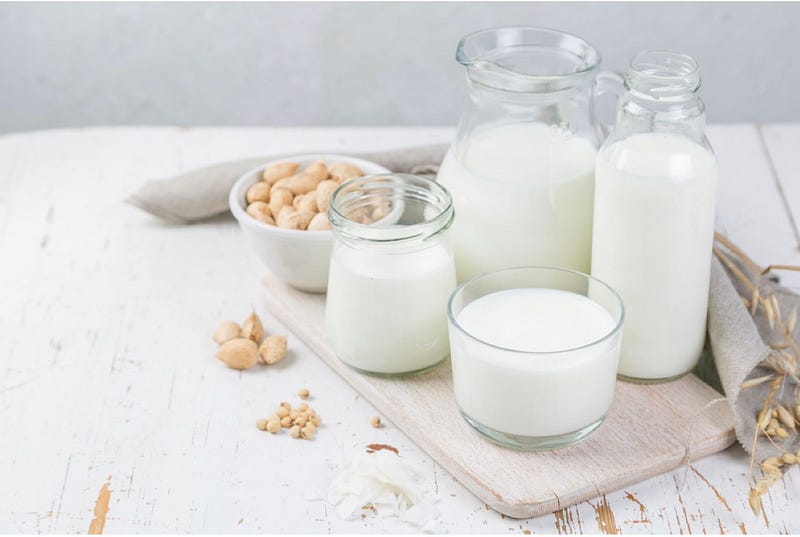Exploring AI-Generated Meal Plans: Safety for Food Allergies
Written on
Chapter 1: Introduction to AI in Meal Planning
As artificial intelligence (AI) becomes increasingly integrated into various sectors—from healthcare to content generation—the question emerges: Are "robo recipes" the future of meal planning? A recent investigation from Poland examined the potential of AI in crafting meal plans, specifically for those with food allergies. The results, however, were somewhat mixed.

Researchers from the Poznań University of Economics and Business utilized ChatGPT, a cutting-edge AI language model created by OpenAI, to suggest meals for individuals with specific food allergies. Paweł Niszczota, the primary researcher behind the study featured in the journal Nutrition, pointed out that while ChatGPT often generated balanced meal plans, not every suggestion was safe for consumption.
The impetus for this research arose from alarming statistics indicating that around 30,000 individuals visit emergency rooms each year due to food allergy reactions, with 150 to 200 cases resulting in fatalities. With these risks in mind, the researchers aimed to evaluate the safety of using ChatGPT for recipe creation.
Niszczota emphasized the potential for ChatGPT to be a valuable resource for professionals like dietitians, who can discern when the AI might provide misleading information. However, he cautioned against the general public relying on the model's confident responses as an indicator of accuracy. He also noted that ChatGPT enables users to explore a broad array of dietary options without needing to consult a nutritionist.
Section 1.1: Focus on Common Food Allergens
The study centered on 14 prevalent food allergens, such as gluten, peanuts, soy, milk, and various nuts, as discussed in the journal Nutrition. On January 28, researchers prompted ChatGPT with four different dietary restrictions, and a qualified dietitian assessed the AI's responses.

Section 1.2: Advantages of AI in Meal Planning
Piyush Tripathi, a lead engineer at Square in San Francisco, who developed his own dietary application using a different model called BERT, highlighted the versatility that large language models (LLMs) offer in meal planning. He mentioned that LLMs like ChatGPT can evaluate ingredient lists, nutritional data, and user preferences to suggest alternative ingredients and provide detailed information about suitable food options. Furthermore, the constant availability of ChatGPT-like technology facilitates immediate responses to user inquiries.
Chapter 2: Analyzing the Findings
Despite the noted strengths of AI-generated meal suggestions, such as adherence to basic dietary guidelines and practical advice like the importance of label reading, several concerns were raised. In 7.1% of instances, the meals proposed by ChatGPT included allergens meant to be avoided; for example, almond milk was incorrectly suggested for nut-free diets, representing a serious risk for individuals with nut allergies. The study also highlighted issues with certain diets falling short in caloric intake necessary for meeting nutritional needs. Additionally, the lack of variety in meal recommendations could deter individuals from consistently following the suggested plans.
The first video titled "I asked AI to meal plan for me… Here's how it went with ChatGPT Prompts" discusses the results of using AI for meal planning.
Niszczota observed that the version of ChatGPT utilized in the study generated repetitive meal menus, which would likely lead to user disengagement over time. He warned of the inherent risks associated with large language models providing nutritional advice that may be detrimental for those with allergies.
The second video, "Dietitian vs ChatGPT: Eating a meal plan made by AI," explores the comparison between AI-generated meal plans and those created by human dietitians.
Moreover, Niszczota cautioned against assuming accuracy merely based on the confident manner in which generative AI delivers advice. The limitation of ChatGPT's inability to include images in its responses was also highlighted. Niszczota suggested that the incorporation of images could enhance the utility of meal recommendations, particularly for individuals with allergies who might take pictures of their meals to seek AI feedback. The question of liability in the event of adverse reactions stemming from AI-generated meal plans remains unclear, raising concerns about accountability.
Section 2.1: Study Limitations
The study had several limitations, including a sole reliance on ChatGPT without exploring other large language models like Google Bard. The researchers acknowledged the necessity for longitudinal studies to better understand how individuals utilize dietary guidance from AI models. Furthermore, as the study was conducted in January 2023, subsequent updates to ChatGPT may yield different outcomes. Additionally, the findings were based on a limited number of prompts, which constrained the scope of the results.
Experts advise against depending entirely on AI for personalized dietary recommendations. Tripathi underscores the importance of providing comprehensive information about an individual’s health status, dietary preferences, and lifestyle when utilizing ChatGPT or similar models.
Ultimately, the meal plans produced by ChatGPT should not be seen as a replacement for professional medical guidance.